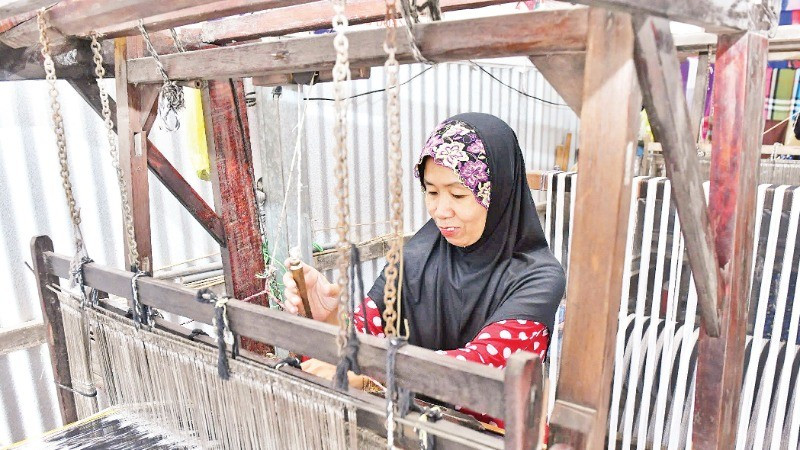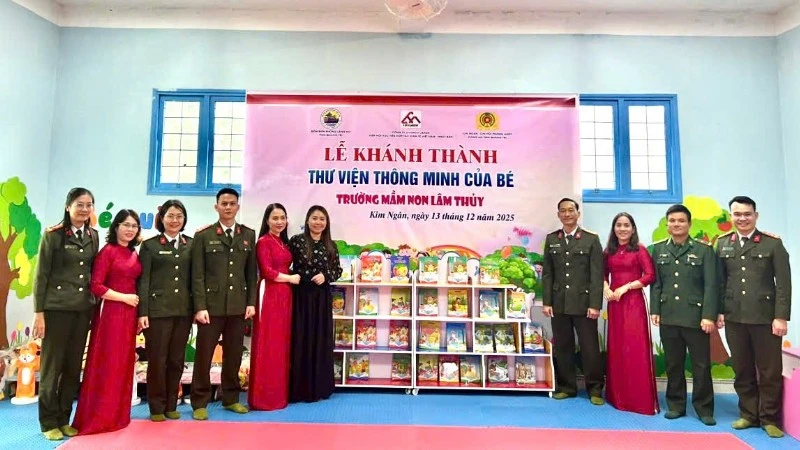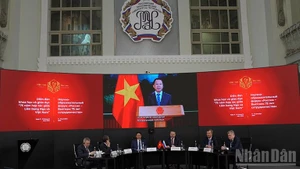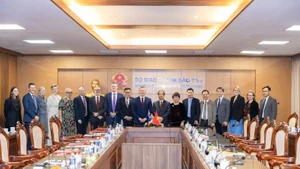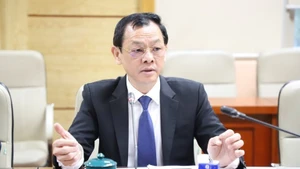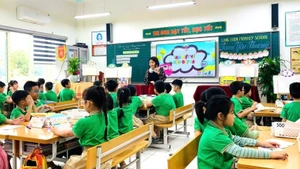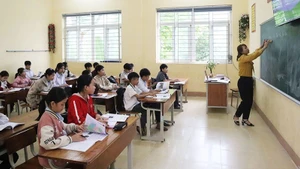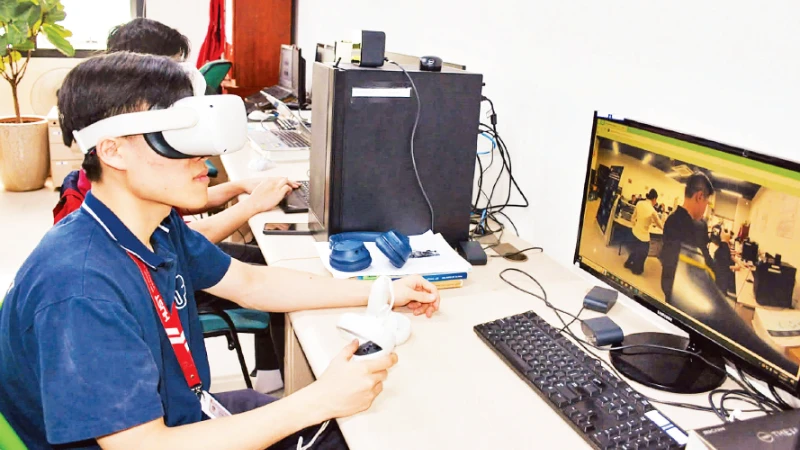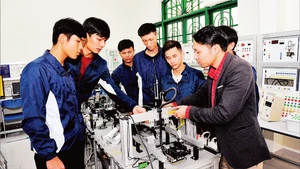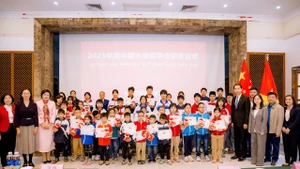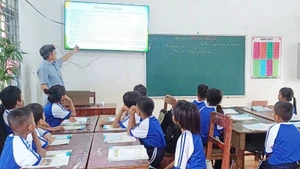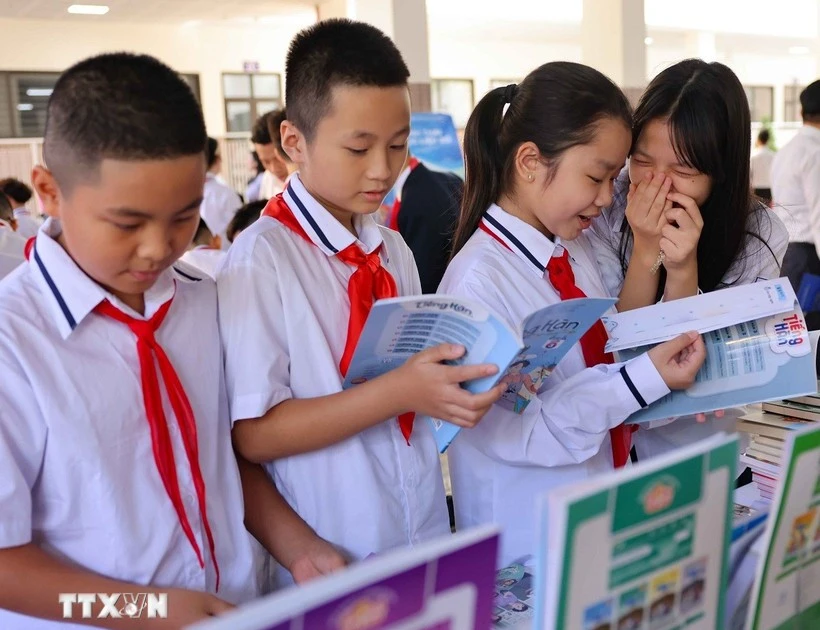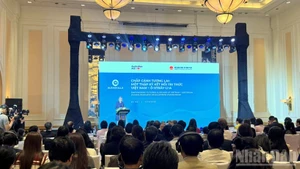Cham people in An Giang live mainly in An Phu District and Tan Chau Town. According to Huynh Thanh Cu, Deputy Director of An Giang Provincial Department of Ethnic Minorities and Religions, in rural areas with a large concentration of ethnic minorities, infrastructure has been invested in and built; 100% of communes have asphalt and concrete roads; 100% of communes have medical stations, irrigation works, national power grid or rural electricity. National target programs implemented in the province have helped improve the lives of ethnic minorities.
Changes from a Cham village
Chau Phong Commune, Tan Chau Town, located along the Hau River, is home to over 3,000 Cham people living in three hamlets: Phum Soai, Chau Giang, and Hoa Long. According to Pham Dang Than, Secretary of the Party Committee and Chairman of the People's Committee of Chau Phong commune, the Cham Village in Phum Soai Hamlet has undergone significant transformation over the past 15 years. One of the most notable changes is the resettlement area for the Cham community, which was built by local authorities. In the past, Cham people living along the riverbanks often faced the threat of land erosion. With stable housing, they no longer have to worry about relocating due to erosion, allowing them to focus on their livelihoods and send their children to school. Cham women, still modestly covering their faces with scarves, have become more integrated with the community, opening grocery stores and selling traditional Cham food.
Pham Dang Than also noted that with government investment, 100% of rural and internal roads have been paved with asphalt or concrete, facilitating the transportation of goods and boosting the local economy. As a result, the poverty rate has dropped to just 1.09%.
Chau Phong Cham Village is known for its brocade weaving, which has been recognised as a national intangible cultural heritage by the Ministry of Culture, Sports, and Tourism.
Mohamad, a third-generation brocade weaver, shared that many visitors come to his workshop to learn about the unique technique used to create the patterned scarf, which only Cham artisans in Chau Phong still master. Watching artisans skillfully operate the traditional looms, visitors are fascinated by this ancient weaving method and eagerly purchase the soft, handcrafted brocade products.
With local government support, Mohamad and 11 other Cham households established the Cham Village Community Tourism Cooperative. When we visited, a group of European tourists was exploring the weaving craft and traditional Cham cuisine. Mohamad enthusiastically explained the process to them, stating that each cooperative member has unique products to offer. Together, they are committed to preserving and promoting traditional crafts while diversifying tourism experiences, allowing visitors to immerse themselves in the distinctive cultural aspects of the Cham people and their homeland.
According to the Tan Chau Town Economic Office, in addition to supporting brocade weaving, the town also helps develop other Cham specialities.
Cham businessman Hua Hoang Vu’s product, with government support, has been officially recognised as a 3-star OCOP (One Commune One Product) item.
Developing community-based tourism
From Chau Phong Cham Village, we travelled to An Phu District, passing through Cham villages in four communes—Khanh Binh, Nhon Hoi, Quoc Thai, and Vinh Truong—as well as Da Phuoc Town. At this time of year, Cham Muslims are observing Ramadan.
At the mosques, many Cham people practising Islam gather for prayers. During this important religious event, representatives from central and local authorities visit to offer greetings, flowers, and gifts to the high priests, religious leaders, and respected figures within the Cham Muslim community.
A Fandi, Deputy High Priest of Masjid Ehsan Mosque in Da Phuoc Cham Village, shared that Ramadan this year is particularly joyful as the Cham people's living conditions have improved. In Da Phuoc Town, Cham residents mainly live in Ha Bao 2 Hamlet. In the past, they relied on agriculture and fishing with basic equipment. Today, they have shifted towards trade and services, using modern transportation. Their standard of living has significantly improved.
According to Doan Thanh Viet, Deputy Head of the Internal Affairs Department of An Phu District, a residential area in Ba Hao 2 Hamlet has been developed with 180 plots and a 1,500 m2 market exclusively for Cham people. The district is now focusing on community-based tourism, as this area connects with the floating village at the Chau Doc River Junction, Islamic worship sites, and the Cham Cultural House, creating an attractive tourism network.
According to the An Giang Provincial Department of Education and Training, the province has 2,570 Cham students from preschool to high school, all of whom receive tuition waivers and health insurance support as per government policies.
Doan Thanh Viet stated that An Phu District is home to over 8,000 Cham people, and public security remains stable with minimal social issues. The government collaborates with respected community figures to encourage Cham people to participate in border protection and national security efforts while discouraging illegal trade activities. The district has focused on utilising central and provincial funding to enhance social welfare and poverty reduction for the Cham community. Recently, 14 houses were built for poor and disadvantaged Cham families in La Ma Hamlet (Vinh Truong Commune) and Bung Lon Hamlet (Nhon Hoi Commune).
From 2024 to 2029, An Phu District aims to further improve the lives of Cham residents, with ambitious targets. By 2025, the average income of Cham people is expected to more than double compared to 2020, and the poverty rate among Cham households is projected to decrease by over 3% annually.
According to Haji Jacky, Head of the Cham Muslim Community Representative Board in An Giang Province, the Party and the State have invested in various projects benefiting the Cham people, such as loans, infrastructure, schools, healthcare centres, housing, and residential clusters designated for ethnic minorities.
Additionally, the Party and the Government have also prioritised policies to support ethnic minorities, improving their spiritual lives and creating opportunities for economic growth. These initiatives have led to positive transformations in the material and spiritual well-being of the Cham community.
